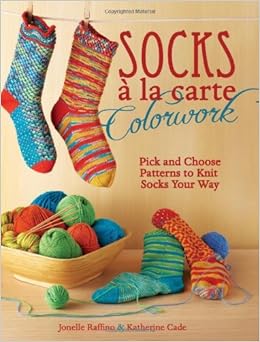First, a reminder I’m teaching a variety of classes this weekend in and around DC. If you’ve been missing my smiling face, this is a good opportunity to get your Tinking Turtle Fix! A quick rundown, excerpted from my newsletter:
Darn Those Knits is happening at Fibre Space on Saturday the 6th. While this class is wonderful for teaching you the practical skills of learning how to repair your handknits, it also has a great side benefit: you’ll have a greater understanding of know knit and purl stitches interact. You’ll go home with a better understanding of the Duplicate Stitch, and even learn a great way to “hack” doing the Kitchener stitch. This class isn’t only about repairing things, it’s also about understanding your knitting. |
Crazy Simple Lace: Hairpin Crochet is one of my favorite classes to teach for a couple of reasons. I don’t get to teach crochet classes as often as I do knitting. I love how fast this scarf works up, which makes it a great gift for the holidays (which are fast approaching!). And if you’ve never worked hairpin lace before, you’ll be shocked at how versatile it is. This class is also happening at Fibre Space on the 6th, and would be a great way to spend your Saturday afternoon! |
Colorwork Backwards, Forwards and Sideways is my inaugural class I’ll be teaching at the Knitting Boutique. I’m so excited to teach this killer class! This class features a fun pattern (exclusive to the class) to demonstrate how to do jogless stripes, work with stranded knitting, and how to use slipped stitches in stunning results! I decided to work my sample in traditional fall colors, since cool weather is right around the corner. And this quick cowl simply flies by! |
I’ve been gobbling up Seanan McGuire’s The Winter Long, which is the 8th book in her Toby Daye Series. I’ve talked about how much I enjoy Seanan’s writing; so much so that the scarf I’m using to teach this weekend, One Salt Sea, is a nod to one of her books. A mix of urban fantasy, folklore and mystery, I’ve been waiting the last year to read this book. While the genre might not be everyone’s cup of tea, I love the book for the strong plotted elements. Like the Harry Potter series, or even the Outlander series, there are strong threads seeded in the first book that come to fruit in this book. It’s amazing to behold.
Now that I’ve read the book, I’m thinking I might just have to get the books on tape and marathon the entire series, just so I can take my time and appreciate what McGuire has been building for the last few years.
I’ve also been listening to a lot of other things on audio. I’ve talked before about my love of RadioLab, but I’ve also been marathoning Welcome to Night Vale. Night Vale is a fake radio show highlighting a rather strange town out in the middle of a desert. Both strange and hopeful, frightening and contemplative, it’s not the sort of thing I’d normally enjoy, and yet I do.
I’m actually thinking that I want to decorate my house as a tribute to Night Vale for Halloween. As if I don’t have enough to keep me busy.
What’ve you been up to?






























 When I was younger and my mother needed something to keep my
When I was younger and my mother needed something to keep my

